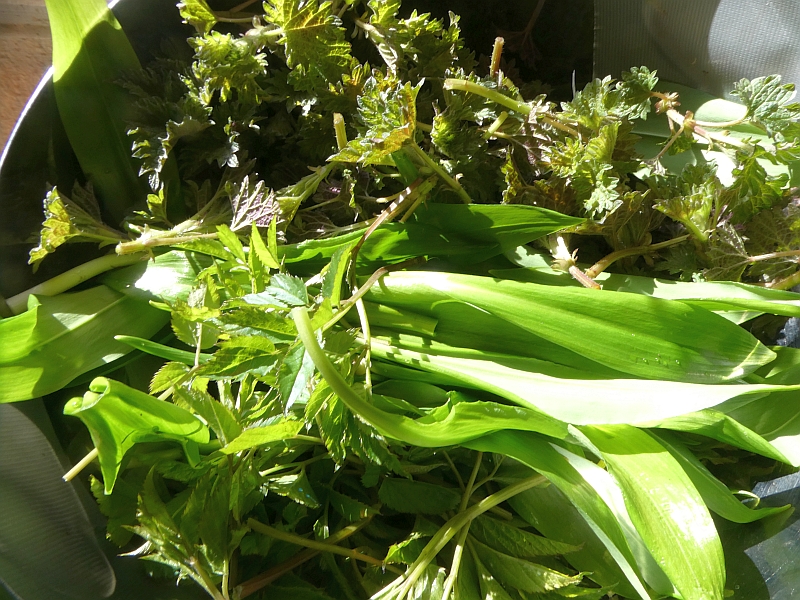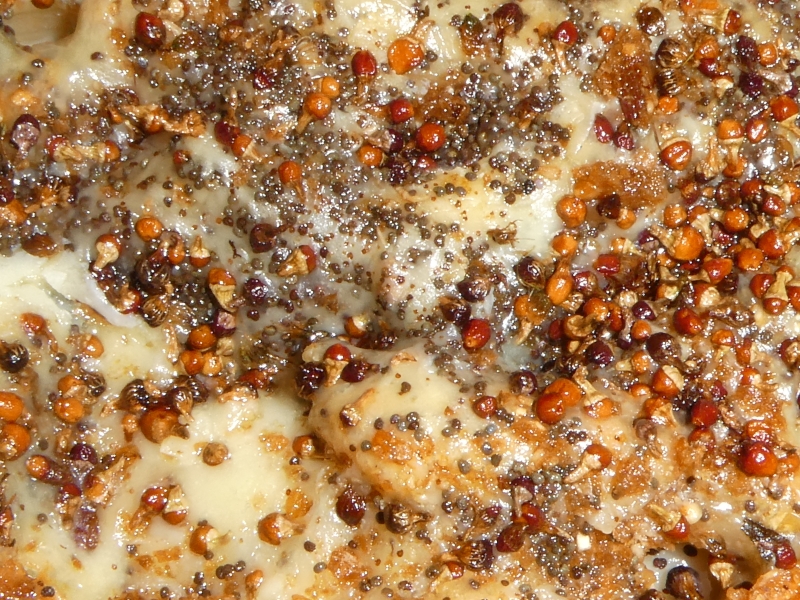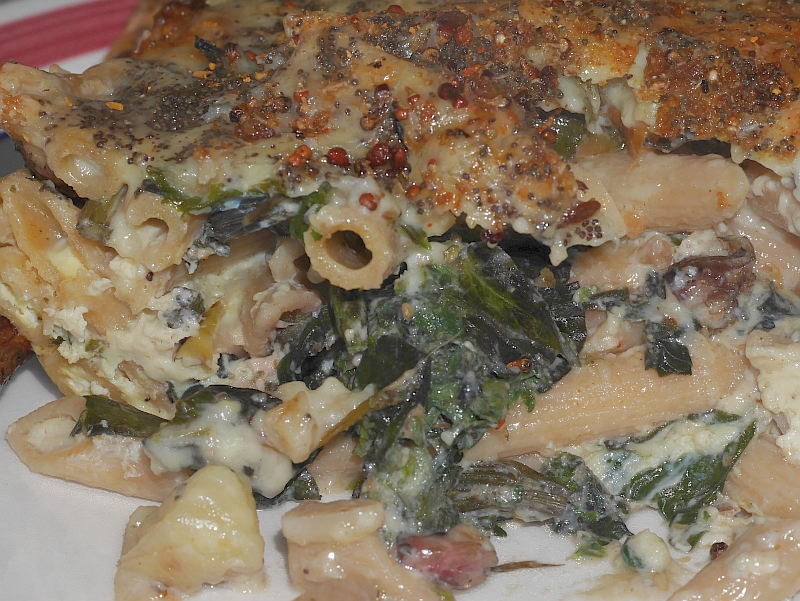Please subscribe to my youtube channel!
1. Perennial Edge https://youtu.be/qRsQt_U0Ujo
The edges of my annual beds in the garden are not so productive as they are drier because of overhanging branches of the hazel,/birch/aspen woodland adjacent to it. I therefore allow perennial vegetables to colonise these areas as they are much less impacted by summer drought conditions, growing most actively in the spring time. In this video I show garlic (hvitløk) being grown as a perennial together with Hablitzia tamnoides (trained up into the trees), stinging nettle (Urtica dioica), hogweed (bjørnekjeks), dandelion (løvetann) and ground elder (skvallerkål). This area at the same time supports a large biodiversity of, in particular, insects.
2. Hydrophyllum in the World Garden https://youtu.be/gLC7XLYTG5A
The genus Hydrophyllum or the waterleaves consists of seven or eight species restricted to North America, half of which are restricted to the east and half at higher elevations in the west. I have best experience with Hydrophyllum virginianum (Eastern waterleaf) and Hydrophyllum tenuipes (Pacific waterlef) and both are growing well as you can see in the World Garden (Verdenshagen). We see both in the video at harvest time and introducing a beginning battle for dominance with fellow Appalachian rhizomatous Rudbeckia laciniata (Cherokee greens or sochan). The young and the tips of stems are best in salads; having a mild sweetest taste, the older leaves usually being cooked (boiled or steamed). I usually use them mixed with other seasonal greens in salads and vegetarian dishes. Indian salad or Shawnee (no, not Pawnee which I say in the video) salad and west coast H. tenuipes is known as squaw lettuce. The name John’s cabbage is also used in the east, vouching for the fact that white settlers also learned to use this spring vegetable. In 1818, William Barton wrote that, ‘The Indian Salad and Shawnee Salad of Kentucky and Ohio are praised by the white settlers’, and, ‘The young shoots are praised by all who eat them’. Please read more in my book Around the World in 80 plants!
3. The Oldest Habby Bed https://youtu.be/_ErX8IcTq04
My oldest Hablitzia tamnoides (Habby) is now 23 years old and rapidly approaching 1/4 of a century and just as vigorous as ever. In this short video I introduce some of its offspring which love the shady sheltered conditions in this plant of the garden. I reckon that blanched Habby shoots would be a winner in gourmet restaurants, a bit like Jet de Houblons (blanched Belgian hop shoots). Also starring probably Smyrnium olusatrum (Alexanders / sorte løpstikke), Allium paradoxum var paradoxum (few-flowered leek) and Viola odorata (sweet violet / marsfiol)
4. Prunus tomentosa at Være https://youtu.be/fbJmv-d9Gug
One of the more unusual berry / fruit bushes in the collection at the Væres Venners Conmunity Garden in Trondheim is the very hardy Nanking cherry / kinesisk kirsebær (Prunus tomentosa), a native to northern and western China (including Tibet), Korea and Mongolia. As the video shows, it is already in full flower and is therefore valuable for both wild bees and bumble bees in early spring, but it was a bit too windy when this video was made on 24th April 2025. We see two varieties purchased from Steen and Wormsen, a nursery in northern Norway who imported from a great plant nusery in Finland: Blomqvist’s Planteskola. The variety with snow white flowers is Snøhvit Lumikki. It looks promising for a good crop!
5. The Moss Leaved Dandelion https://youtu.be/m1Y6iKBRuFw
The moss leaved dandelion is depicted in Vilmorin’s amazing book The Vegetable Garden from 1920 (I would encourage anyone to access this book which shows the amazing vegetable diversity we had 100 years ago). After much searching I was sent seed and a root by Guy Dirix in Belgium who may have been the last person growing this variety, although it turns out that this is actually the species Taraxacum tortilobum, a relatively common species in Western Europe (https://www.gbif.org/species/5394131). Here’s a short video of it in the World Garden in Væres Venners Community Garden in Trondheim, Norway.
6. An edible self-sustaining perennial community https://youtu.be/ksfo6FoZOyc
A shady bed in the garden which has had various uses over the years starting as a little garden where my daughter Hazel grew her strawberries to an area where I grew various seed propagated trees and bushes before planting them out elsewhere in the garden (the lilac is from that time). Although I planted various shade loving perennial edibles in this bed originally, others have moved in from neighbouring beds to form this complex edible perennial community which has become more productive with time. I do little more than harvest, observe and weed out tree seedlings.
Polygonatum spp. (purple-leaved solomon’s seal / konvall, perhaps P. biflorum)
Hydrophyllum virginianum (Easter waterleaf / vassblad)
Campanula latifolia (Giant bellflower / storklokke)
Campanula trachelium (nettle-leaved bellflower / nesleklokke)
Heracleum sp. (hogweed / bjørnekjeks)
Hablitzia tamnoides (Caucasian spinach / stjernemelde)
Allium schoenoprasum (chives / gressløk)
Parasenecio maximowiczianum
Parasenecio hastatus
Tag Archives: Hablitzia tamnoides
Soba perennial veg stir-fry
This week’s perennial veg stir-fry with soba (buckwheat noodles), Japanese style contained the following (roughly left to right in the picture):
Nettles / stornesle (Urtica dioica)
Burdock / storborre roots (Arctium lappa); stored in the cellar
Wapato tubers (Sagittaria latifolia); stored in the cellar in water
Ramsons / ramsløk (Allium ursinum)
Caucasian spinach / stjernemelde (Hablitzia tamnoides)
Giant bellflower / storklokke (Campanula latifolia)
Himalayan water creeper (Houttuynia cordata) – reddish shoots
Sand leek / bendelløk (Allium scorodoprasum)
Garlic / hvitløk (Allium sativum)

Hablitzia beginnings
The video can be seen here: HABLITZIA BEGINNINGS
Seed saving talk weekend
Thanks to KVANN (Norwegian Seed Savers) colleague Andrew McMillion for coming up to Trondheim to give his seed saving course for local KVANN and Væres Venner Community Garden members!
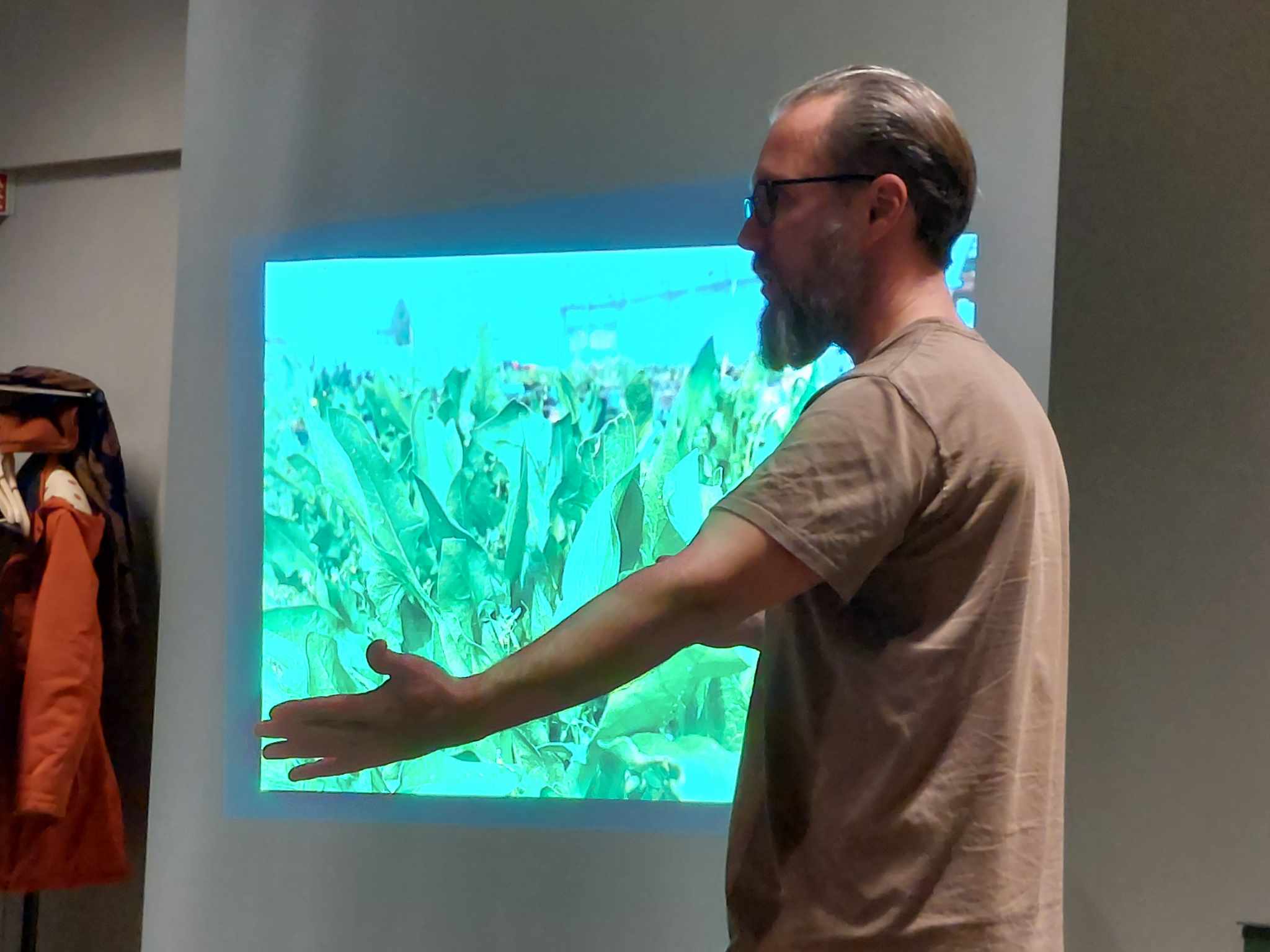
…and there was time for a Malvik visit, a seed saving and breeding chat, a tour of my seed boxes and a little salad with Witloof chicory and dandelion pizza.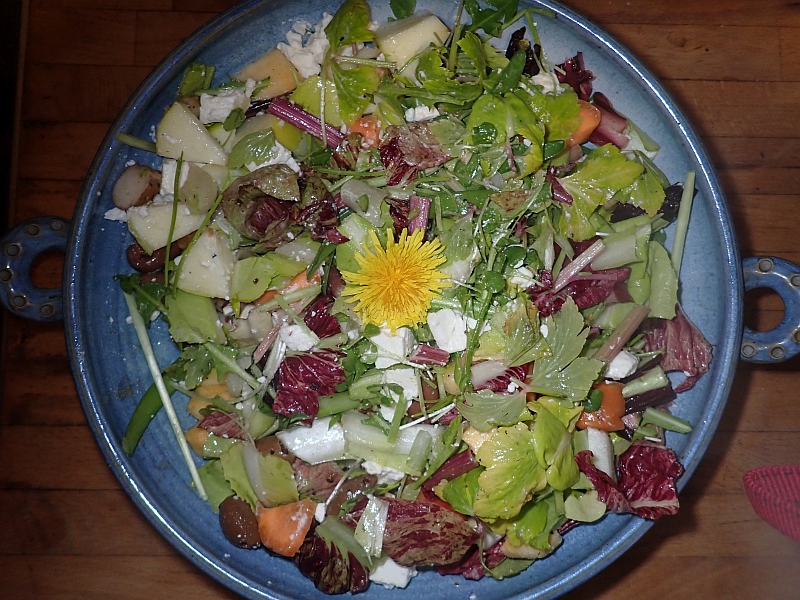
 Salad ingredients: Celery, three chicory varieties, dandelion (including one flower), carrot, Japanese yams, Allium cernuum and Hablitzia (from the garden), Hristo’s onion (Allium flavescens x nutans?), oca (2 varieties), apple (Aroma), horseradish shoots, garlic, chives, wild buckwheat shoots and turnip “Målselvnepe”
Salad ingredients: Celery, three chicory varieties, dandelion (including one flower), carrot, Japanese yams, Allium cernuum and Hablitzia (from the garden), Hristo’s onion (Allium flavescens x nutans?), oca (2 varieties), apple (Aroma), horseradish shoots, garlic, chives, wild buckwheat shoots and turnip “Målselvnepe”
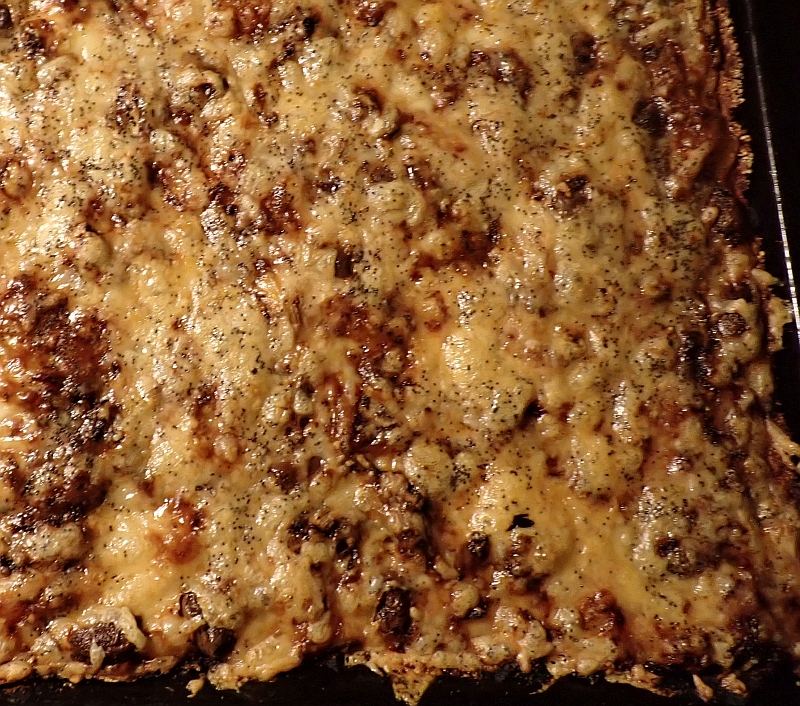
…and my seed archive: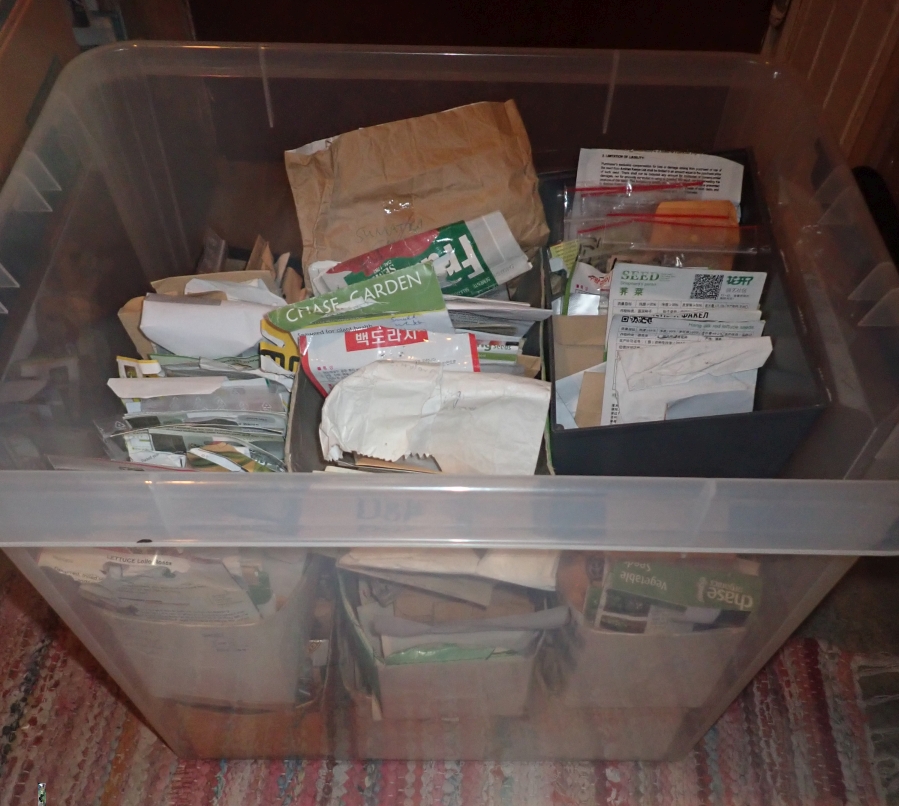
ARTIKLER OM FLERÅRIGE GRØNNSAKER FRA HAGETIDEND 2021
I 2021 publiserte Norsk Hagetidend en serie artikler jeg hadde skrevet om 10 av mine favoritt flerårige grønnsaker til Norsk Hagetidend. Alle artiklene kan nå bli lastet ned ved å klikke på lenkene nedenfor!
English: In 2021, I wrote a series of two page articles about my favourite perennial vegetables for Norsk Hagetidend (the magazine of the Norwegian Horticultural Society) in Norwegian. The complete series can be found below.
The plants are (scroll down to all the articles):
February 2021 Caucasian spinach / stjernemelde (Hablitzia tamnoides)
March 2021 Horseradish / pepperrot (Armoracia rusticana)
April 2021 Sea kale / strandkål (Crambe maritima)
May 2021 Nodding onion / prærieløk (Allium cernuum)
June 2021 Udo (Aralia cordata)
July 2021 St, Jansuien / sankthansløk (Allium x cornutum)
August 2021 Cherokee spinach / gjerdesolhatt (Rudbeckia laciniata)
September 2021 Hosta / bladlilje (Hosta spp.)
October 2021 Patience dock / hagesyre (Rumex patientia)
November 2021 Persian shallot / persisk sjalott (Allium stipitatum)
Hablitzia, Laportea and Nettle Gnocchi
What to do with the very last Sarpo Mira potatoes from the cellar? Last night’s dinner was Gnocchi made with Hablitzia leaf, Laportea canadensis (Canadian wood nettle tops) and stinging nettle tops. I must admit that our first attempt turned into a gnocchi soup, so we had a starter with exactly the same ingredients as the main course :) The second attempt was excellent though!
Hablitzia tamnoides leaves:
Canadian wood nettle (Laportea canadensis); the tops of the stems can also be used: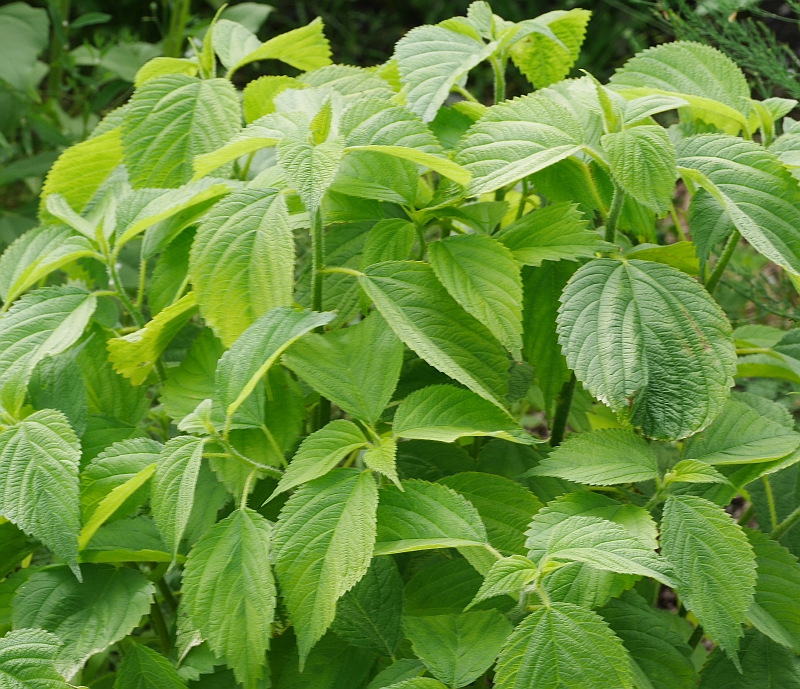 Making the gnocchi (potato used instead of grain for pasta):
Making the gnocchi (potato used instead of grain for pasta):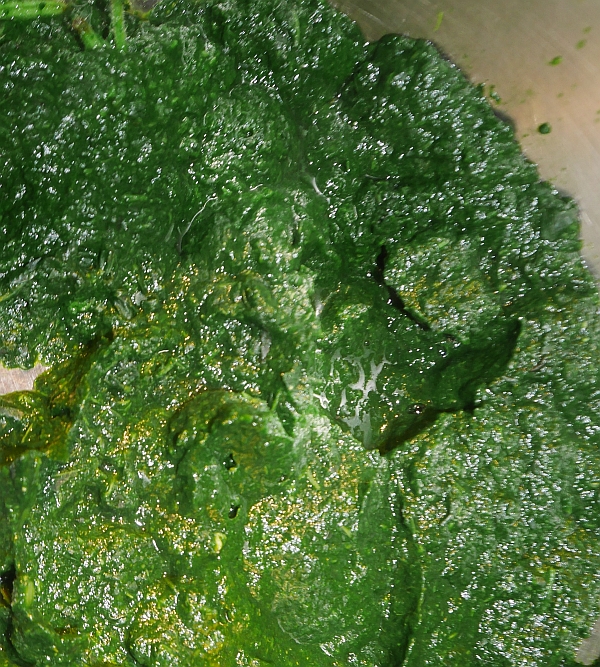
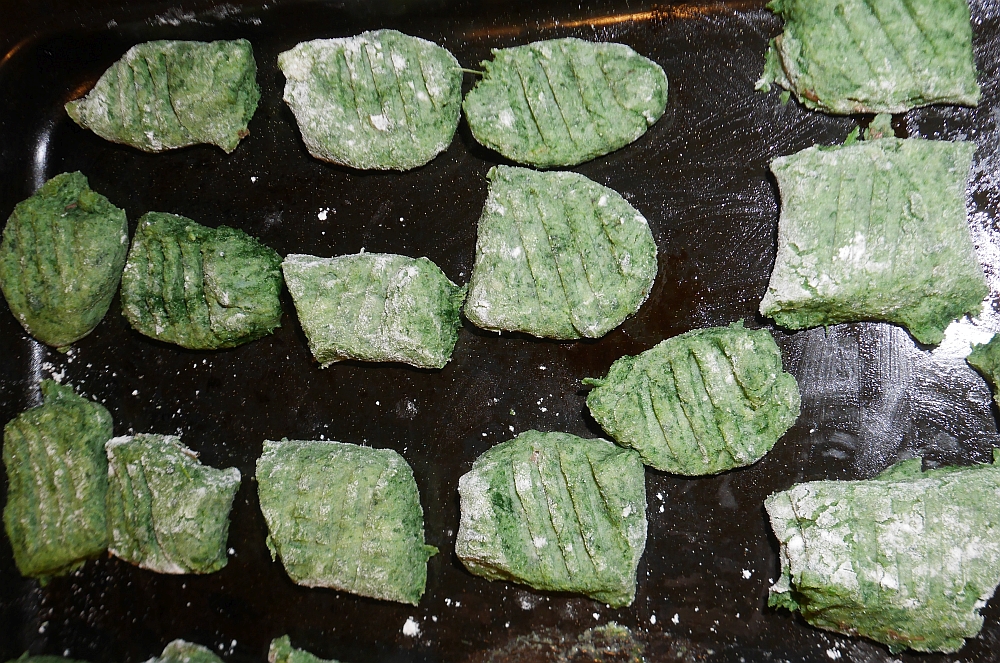

Visit from the National Museum and Credo
Continuing a series of visits and projects where art meets my perennial vegetables. Yesterday, I had the pleasure of welcoming a delegation from the National Museum (Nasjonalmuseet), https://www.nasjonalmuseet.no/en
Thanks to Heidi Bjerkan of Credo Restaurant who suggested that they should also visit my garden when in Trondheim on a fact-finding mission in connection with a planned exhibition celebrating 20 years of “New Nordic Food” in 2024 (see https://www.nasjonalmuseet.no/aktuelt/2022/nasjonalmuseets-utstillingsprogram)! Credo are one of Trondheim’s acCREDOited Michelin restaurants whom I’ve had the pleasure to work with and advise several times in the past. Here are a couple of pictures from the couple of hours they were here on a wonderful summer day with the garden at its most seductive :)
3 from Nasjonalmuseet with Martin Braathen on the far right with two Hablitzia plants to be planted outside the museum, with two also from Credo including Heidi Bjerkan!
Hablitzia under Norway Spruce
Hablitzia tamnoides (Caucasian spinach / stjernemelde) has self-sowed numerous times in my garden but only up to now on cultivated beds with naked soil. Now for the first time I noticed one had popped up in dry soil under my two oldest Norway spruce trees (Picea abies; gran) which are probably in their 80s. There are a number of Hablitzia plants in a bed about 8m above this site (I believe that the shiny seeds of Hablitzia can disperse by falling on icy snow and are blown by the wind). This is an area which had been invaded by hedge mustard / løkurt (Alliaria petiolata). I’ve been systematically removing this plant from this area and other parts of the garden where it was rapidly taking over. Incidentally, another climber, Bryonia alba, appeared in the same location in 2010, but died after a few years (last picture). It wil be interesting to see if this plant manages to establish here.
No, I don’t think Hablitzia has the potential to be invasive!
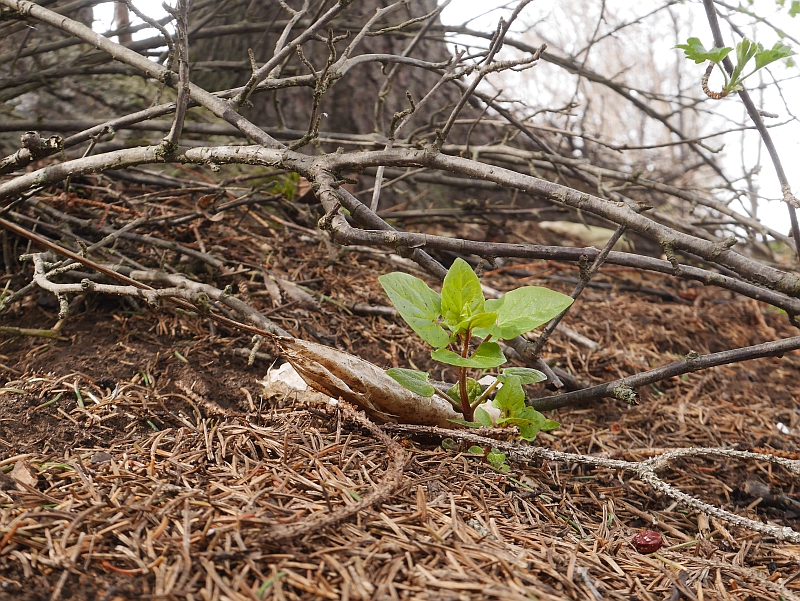
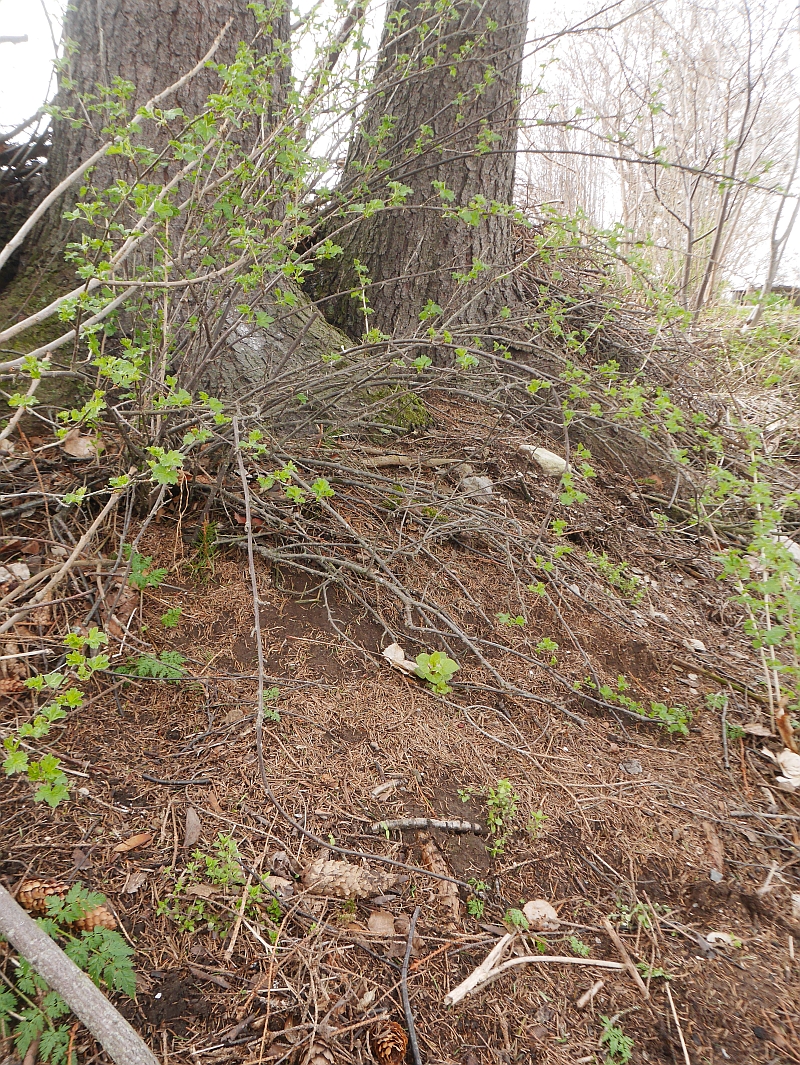
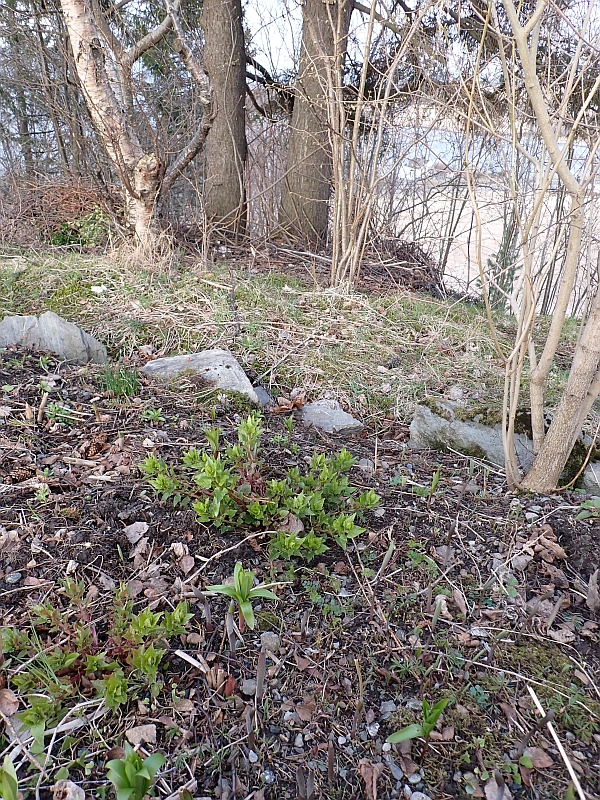
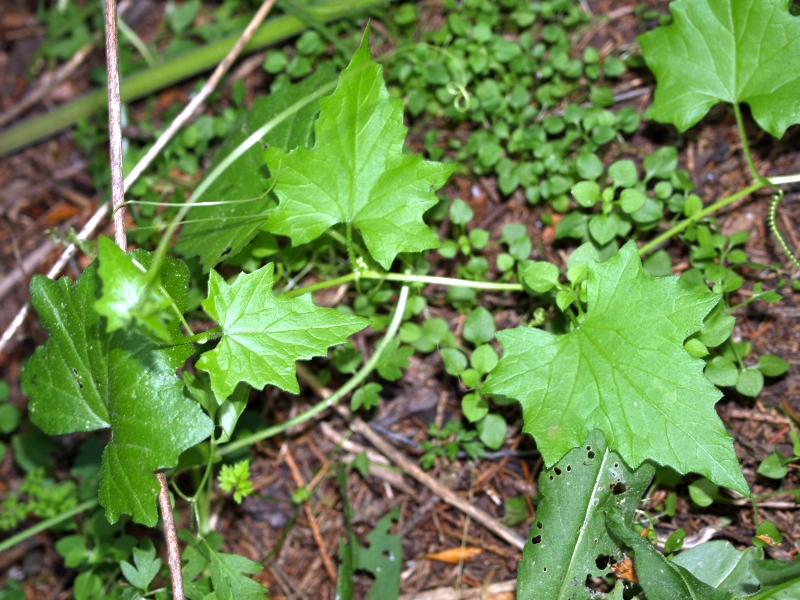
68th Birthday Mac-Cheese with 68 shoots of 4 species
Last year’s birthday dinner was the Around the World in 80 Mac-Cheese, this year’s green mac-cheese contained 68 Hablitzia shoots, 68 ramsons (ramsløk) leaves, 68 ground elder (skvallerkål) leaves and 68 stinging nettle (brennesle) shoots, with opium poppy seeds and nutty alpine bistort (harerug) bulbils on top!
The video shows me collecting the Hablitzia shoots!
Walking’s not healthy for Habbies
I’ve been growing Hablitzia tamnoides, affectionately known as Habbies, for over 20 years and this is the first registered mortality. On a shallow bed under a birch tree, plants lift during winter as if to walk off to take over the world (OK, probably just frost heave as also happens with parsnip roots), and one of them is now no more, a dead Norwegian habby :( 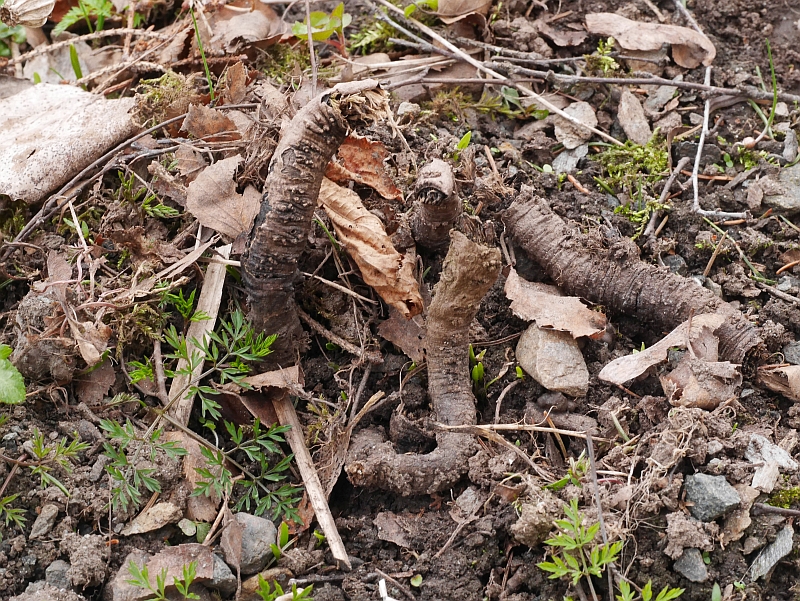
Here’s a few more that are going the same way of I don’t rescue them: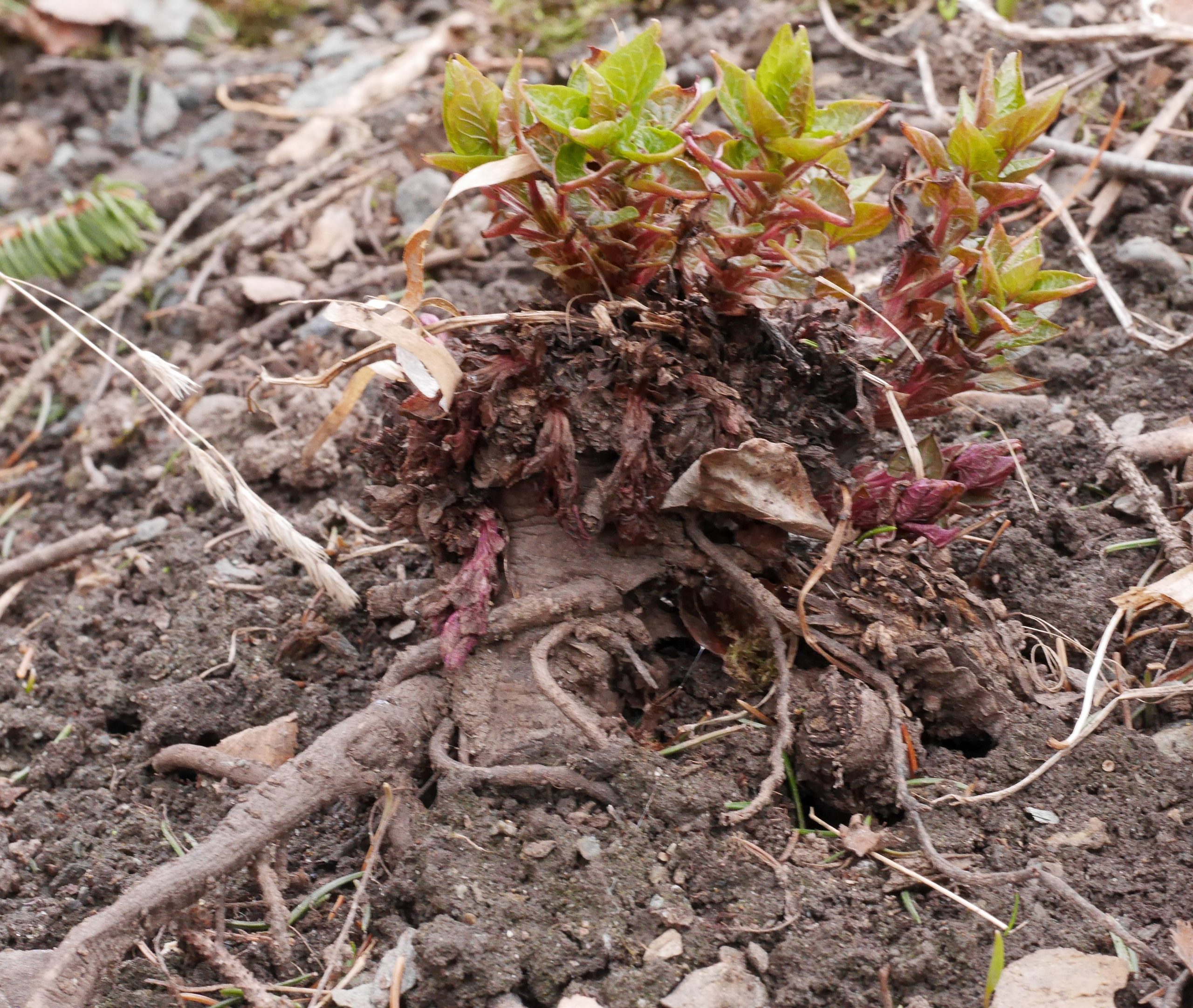
…and below is a nice little edible community where both self-sowed Siberian hogweed (Heracleum sibiricum) and stinging nettle (Urtica dioica) are growing happily in company with Hablitzia tamnoides!

